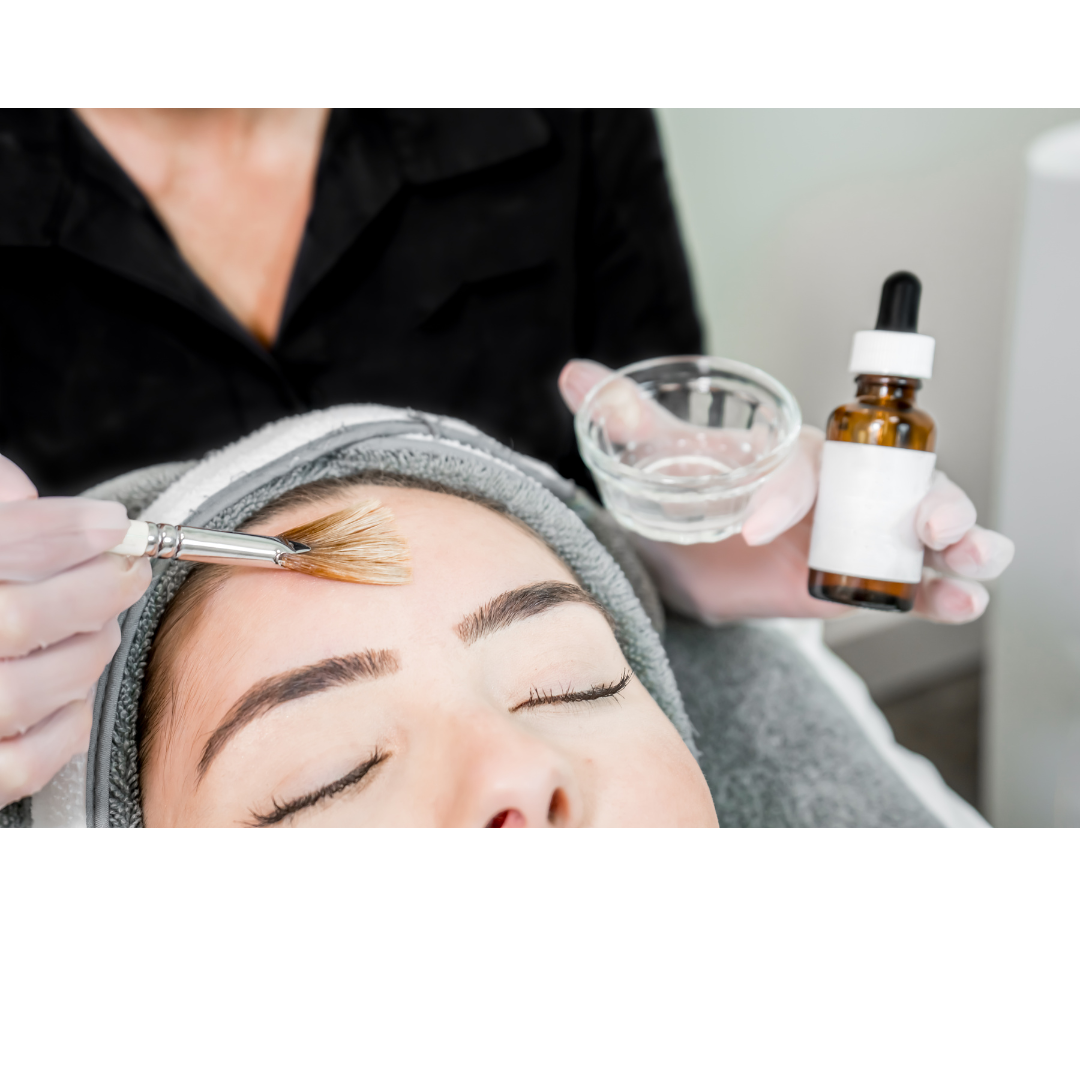For those wanting a fast skin transformation or just needing a quick fix to dull, dehydrated skin, chemical peels come in all shapes and sizes to suit your skin needs. But what are they and how do they work?
Chemical peels are a type of advanced skin treatment that use chemical solutions such as Alpha or Beta Hydroxy Acids, Enzymes or Vitamin A to remove the top layers of dead skin cells and promote the growth of new, healthy skin. They are performed by trained beauty therapists, dermal clinicians or dermatologists depending on the intensity and depth of the peel.
We know that the term chemical peel may conjure up intimidating images of peeling, red skin but we are always sure to consult with you as to what will best suit your skin goals and downtime available!
Chemical peels range from very superficial, superficial and medium - all which can be performed by skin therapists and dermal clinicians, to deep which are performed by plastic surgeons and dermatologists.
Although a deeper peel may technically bring the biggest results, we strongly follow the treatment philosophy of “Progressive not Aggressive”, which is why we always start with a light enzyme or gentle acid peel. This allows us to see how the skin will react to a peel, that ingredient and gives you an opportunity to get used to the aftercare before we work up to the peels that pack a punch.
Gentle peels generally have no redness, irritation or flaking and are ideal for sensitive skin, dehydrated skin or before an event when you need that ultimate glow! As we work up to deeper peels, we will schedule them to allow more time for you to take it easy on the skin as it may be dry, red and a bit irritated for a few days as it heals and transforms your skin!
But why should I even get a peel in the first place? Well, some benefits of chemical peels include:
Improving the appearance of fine lines and wrinkles: Chemical peels can help to remove the top layers of dead skin cells, revealing smoother, more youthful-looking skin. Peels including Glycolic Acid or Retinol can help to stimulate the production of collagen and elastin to improve the structure and firmness of the skin.
Improving skin texture and tone: Chemical peels can help to even out the skin tone and reduce the appearance of dark spots, hyperpigmentation, and melasma. Peels including Lactic Acid, Kojic Acid and other brightening ingredients will help to remove already pigmented skin cells and inhibit the production of new melanin.
Reducing acne and acne scarring: Chemical peels can unclog pores and reduce the appearance of acne and acne scarring. Peels including Salicylic Acid can quickly cut through oily, congested skin and reduce inflammation caused by breakouts.
Brightening the skin: Chemical peels can help to brighten the skin, giving it a more radiant and refreshed appearance. Gentle lactic or enzyme peels will help to hydrate and smooth the skin, improving its luminosity.
What do I need to know before a peel?
With the exception of very gentle peels with no downtime, all peels require a level of preparation to minimize the risk of complications during and post treatment and to ensure you get the best results possible!
Preparation includes:
Use of a pigment controlling serum; When the skin is inflamed the skin can create extra pigment in response, just like when we get a pimple and it leaves a dark or red mark afterwards. During a chemical peel, a level of inflammation is expected in order to stimulate new production of skin cells so we need to make sure we will not cause blotchy pigmentation to arise. This kind of post-inflammatory pigmentation is much harder to treat than the original concern so prevention is key! Pigment controlling serums such as Aspect’s Pigment Punch should be used morning and night for 2-4 weeks prior to peels.

To learn more about Pigment Punch, come visit our expert skin therapists in salon! Purchase in salon or via our webstore
Ensure the skin is hydrated; Whenever we apply any liquid solution to the skin, areas of dehydration are going to absorb it more quickly. In the case of a chemical peel, this can mean that the area becomes over treated or a bit sensitive. Therefore, it’s important to ensure the skin is healthy and hydrated so that the peel can reach even depths all around.
Using the active ingredient in your routine; Before we apply a strong solution of acid, enzyme or retinol to your skin, it’s vital that the skin is prepped on that ingredient prior to test the skin’s tolerance for it. This is particularly important for Retinol peels to ensure that the skin is used to vitamin A being applied topically. As many ingredients can come in different derivatives and forms, it’s best practice to use the same brand’s retail products as the peel you are doing to ensure compatibility. For example, if you are having a Lactic Acid peel for brightening and hydration, you should use Aspect’s Exfol-L serum in between treatments to maintain the benefits of your peel.

To learn more about Exfol-L serum, come visit our expert skin therapists in salon! Purchase in salon or via our webstore
Before any clinical treatment, there are treatments and products that need to be avoided to reduce the chance of complications and irritation. Your skin therapist will discuss this with you before booking you in for a peel and can be found in full here
What do I need to do after a peel?
For the first 3 days after a peel, you must only use the post-treatment products prescribed by your skin therapist to avoid irritation and allow the skin to heal. These will include a gentle cleanser, hydrating serum and occlusive oil or balm to replace the impaired skin barrier and act as a ‘second-skin’.
For the first 3 days only a physical or mineral sunscreen should be used and strict sun avoidance should be undertaken as the skin will be more sensitive to UV radiation and risks uneven pigmentation developing. Image’s Prevention Hydrating SPF Moisturiser is a great option for post treatment care.

To learn more about Prevention+ Hydrating SPF Moisturiser, come visit our expert skin therapists in salon! Purchase in salon or via our webstore
On days 4-5 very gentle active ingredients can be reintroduced such as peptides and niacinamide and a gentle enzyme exfoliation can be done. No use of AHA/BHA exfoliants, retinol, benzoyl peroxide or vitamin C should be used for at least a week or until the skin returns to normal.
During the week prior to and following a peel you should not doing any waxing, threading and facial bleaching and for 4 weeks you should not do any laser, IPL or intensive skin treatments to the area being treated.
It's important to note that chemical peels can cause skin irritation, redness, and sensitivity to sunlight, so it's important to follow post-peel instructions and use sunscreen to protect your skin. It's also important to consult a professional before getting a chemical peel to ensure that it's suitable for your skin type and that you are aware of the risks and benefits of the procedure.
To learn more about our chemical peel options or to book in an appointment, visit our website www.lashandbrowboudoirandskin.com or call +0394296952 !






